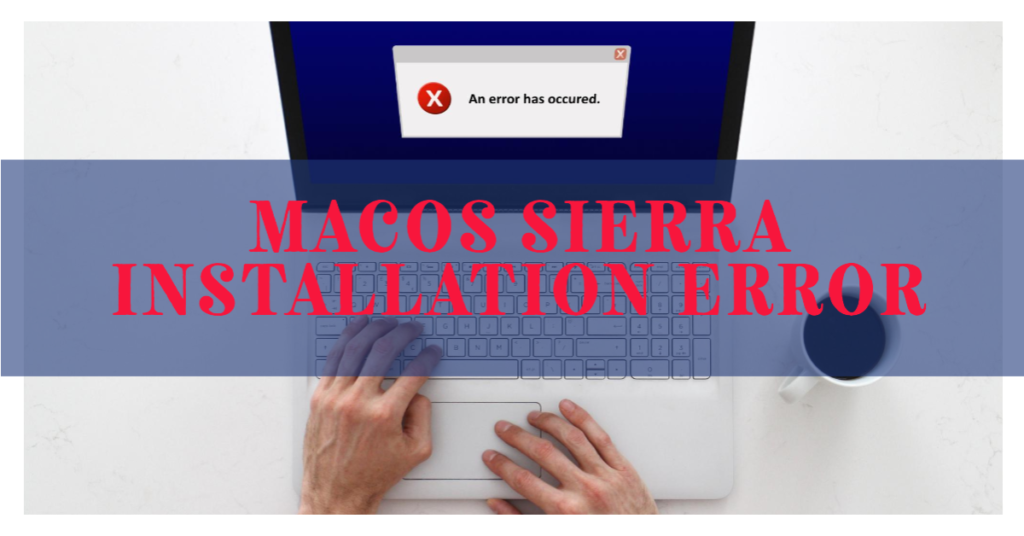Installing macOS Sierra is exciting. The update brings new features and improvements. But you might see, “An error occurred while preparing the installation.” This sounds serious, but it’s not. With the right steps and patience, you can fix it. Some troubleshooting gets you back on track to enjoy your new operating system.
Understanding the Problem
When you start installing macOS Sierra, your Mac must prepare the files. This process is crucial. It ensures everything is ready for a successful installation. If anything goes wrong, you will likely see the dreaded error message.
To solve this error, start by pinpointing its cause. Familiar culprits often lurk behind such issues. Armed with this insight, you’ll navigate the fix with greater ease. Understanding the problem’s core will avoid frustration and ensure a smoother path to resolution.
Install macOS Sierra. It will keep your Mac fast and secure. Each new version of macOS improves performance, stability, and security. Fixing installation errors ASAP will save you time and help you enjoy these advantages to the fullest.

Common Causes of the Error
“An error occurred” has several causes during installation.
Corrupted Installation Media
If you use a USB drive to install macOS Sierra, it may contain corrupted installation files. This corruption could be due to an incomplete download or an issue in creating the bootable USB. The installation may fail if a damaged USB drive or faulty files are present.
Incompatible File System
File system compatibility is crucial for macOS Sierra installation. APFS and HFS+ are the only supported formats. Incompatible file systems on external or non-standard drives often cause installation failures. Check your drive’s format before installing Sierra to avoid potential errors.
Disk Errors
Corrupted files and bad sectors often derail OS installations. For Mac users, a crucial step is to ensure 15-20 GB of free space before attempting the macOS Sierra setup. These precautions help avoid frustrating halts mid-install.
Network Issues
Sometimes, macOS Sierra needs to access resources online during installation. An unstable or slow network can cause interruptions and this error. This issue is more common with an internet-based OS installer.

Strengthening Your Installation Process
Encountering this error can be daunting. But you can take practical steps to fix it. Here are some troubleshooting methods to resolve your issue. They will help you get your macOS Sierra installation back on track.

Verify Your Installation Media
Download the latest macOS Sierra installer from the Mac App Store. Ensure compatibility with your Mac model. Create a fresh bootable USB drive using Disk Utility. Find it in Applications > Utilities. Select your USB drive. Click “Erase.” Format as Mac OS Extended (Journaled) with GUID Partition Map next. This process replaces any faulty installation media, which may resolve your issue.
Check Your Hard Drive
Before installing, ensure your Mac’s hard drive is error-free. Hold Command (⌘) + R during startup to reboot into Recovery Mode. Start Disk Utility and pick your main disk. Then, click “First Aid” to fix issues. This step prevents upgrade issues from disk errors and ensures a smooth installation.
Ensure You Have Enough Storage Space
Check your Mac’s storage before installing. Ensure 15-20 GB of free space. Is your drive close to its capacity? Delete unused apps and files. Move large media to external drives or cloud storage. Use the “Manage” option under Storage in About This Mac for efficient cleanup. This tool in the Apple menu helps optimize your disk space. It’s fast and easy to use.
Reset NVRAM and SMC
Mac installation errors? Try resetting NVRAM and SMC. For NVRAM, restart while holding Option + Command + P + R for 20 seconds. SMC reset varies: T2 chip Macs need a 10-second power button hold during the shutdown. After shutting down, unplug older models for 15 seconds. These quick fixes often resolve stubborn issues.
Check Your Network Connection
Ensure network stability for installations requiring the internet. Opt for a wired Ethernet connection to boost reliability. If Wi-Fi lags, switch networks. A quick router restart often fixes connectivity issues. These steps can greatly improve your connection.
Reinstall macOS Sierra
Boot into Recovery Mode once more. Choose Reinstall macOS. It is not possible to remove the adverb. This process preserves your files while refreshing the operating system. But first, back up your data. It’s crucial. If all else fails, a clean slate might be your best bet. Sierra could shine again on your Mac error-free.
Backup Your Data
Your data’s safety hinges on backups before major changes. Apple’s Time Machine offers a built-in solution. Connect an external drive, then navigate to System Preferences. Select Time Machine and choose your drive as the backup disk. Start your first backup by clicking “Back Up Now.” This precaution safeguards your files, providing peace of mind during installations. With Time Machine, you’re safe from unforeseen issues.
Conclusion
It’s annoying to see, “An error occurred while preparing the installation.” It won’t block you from installing macOS Sierra. First, verify your installation media. Then, check your hard drive. Finally, ensure you have enough storage. Then, follow these troubleshooting steps. Once you resolve the issue, you can proceed with the macOS installation. This upgrade will lead to a more secure, stable system.
FAQs
1. What should I do if my macOS Sierra installation keeps failing?
First, check your USB drive for issues. If it’s fine, download the macOS installer again and create a new bootable USB. Then, check your hard drive for errors and make sure you have enough space.
How much free space does macOS Sierra need?
Free up 15-20 GB of space before beginning. We need this for installation and temporary files.
3. Can I reinstall macOS Sierra without losing my data?
To keep data safe, reinstall macOS Sierra in Recovery Mode. Before doing so, back up files with Time Machine.



